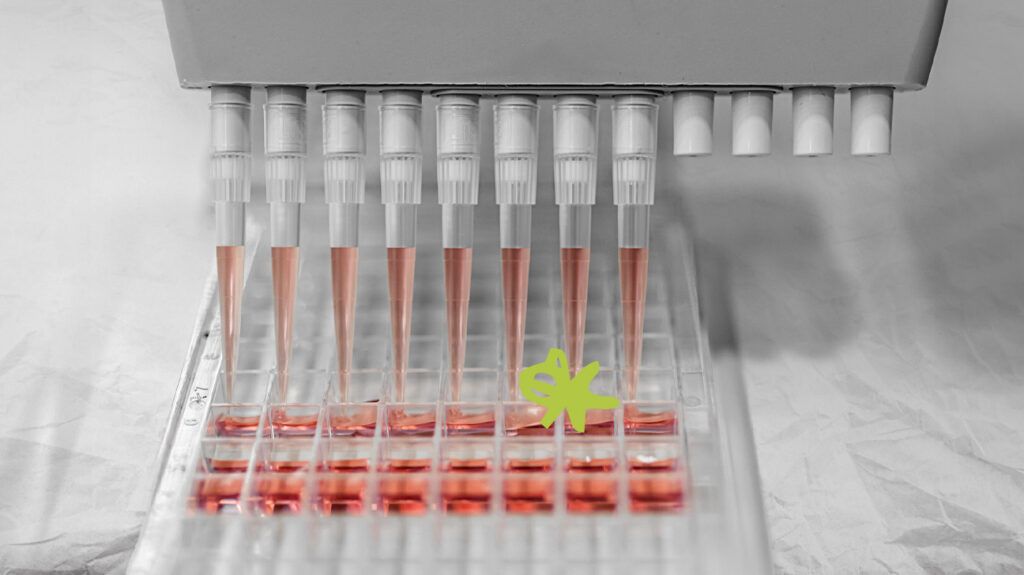
- More than half a million people in the United States live with Crohn’s disease.
- New guidelines from the American Gastroenterological Association recommend biomarkers found in blood and stool be used in the management of the condition.
- Experts say using biomarkers to assess inflammation could spare some people with Crohn’s from invasive procedures such as colonoscopies.
New guidelines from the American Gastroenterological Association could mean people living with Crohn’s disease will need fewer invasive procedures.
The guidelines published today recommend using the C-reactive protein (CRP) biomarker in blood and the fecal calprotectin (FCP) biomarker in stool to measure inflammation levels and assess whether Crohn’s disease is in remission or active.
“Patients’ symptoms do not always match endoscopic findings, so biomarkers are a useful tool to understand and monitor the status of inflammation and guide decision making in patients with Crohn’s disease,” Dr. Siddarth Singh, a co-author of the guidelines and an associate professor of clinical medicine at The University of California San Diego, said in a press statement.
The guidelines recommend biomarkers be used alongside imaging studies and colonoscopies, and at different intervals depending on the patient.
Under the guidelines, patients in remission would have their biomarkers checked every 6 to 12 months. People with active symptoms would have their biomarkers checked every 2 to 4 months.
The authors of the guidelines say it would be good news for patients who would not require as many invasive procedures, like colonoscopy.
“Based on this guideline, biomarkers are no longer considered experimental and should be an integral part of inflammatory bowel disease care,” Dr. Ashwin Ananthakrishnan, a co-author of the guidelines and a gastroenterologist at Massachusetts General Hospital, said in a press statement.
“This is a win for Crohn’s disease patients. Biomarkers are usually easier to obtain, less invasive, more cost-effective than frequent colonoscopies and can be assessed more frequently for tighter disease control and better long-term outcomes in Crohn’s disease,” he added.
Crohn’s disease is a type of inflammatory bowel disease (IBD) that causes irritation and inflammation throughout the digestive tract.
Typically, Crohn’s impacts the small intestine as well as the beginning of the large intestine, although it is possible for inflammation to occur anywhere in the digestive tract, which spans from the mouth to the anus.
Research suggests more than
People living with Crohn’s can experience symptoms such as abdominal cramping, diarrhea, and weight loss.
The goal of treatment is to keep patients in symptom-free remission, prevent flare-ups, and decrease levels of inflammation in the intestine.
The biomarkers suggested in the guidelines are one way of determining levels of inflammation.
“CRP, that’s a simple blood test, it’s drawn routinely for many different disorders. It’s a very general marker for any source of inflammation in the body. So, if there’s anything in your body that’s inflamed, it could result in an increase in that CRP blood test. It is somewhat useful, but definitely flawed. It’s not a perfect biomarker,” Dr Jesse Stondell, a gastroenterologist at UC Davis Health, told Medical News Today.
The other biomarker used in the guidelines is a fecal calprotectin, taken from a stool test.
“It’s much more specific for inflammation in the gastrointestinal tract. If you have an increased fecal calprotectin greater than 150, which is the cutoff for use in the guideline, which I agree with, that indicates there may be significant inflammation in either the colon or the small intestine,” Stondell said.
The experts who spoke with Medical News Today say the use of biomarkers in the guidelines are reflective of a shift in approach to the management of Crohn’s disease.
“In the past, we were really okay with clinical remission. As long as patient symptoms were to the level that we call the clinical remission, that was good enough. Nowadays, we understand that many of these instances that we think the patient is in clinical remission, they are not in deep mucosal remission,” Dr. Ashkan Farhadi a gastroenterologist at MemorialCare Orange Coast Medical Center in California, told Medical News Today.
“When the inflammation is going on, basically the disease is actually going on at a subclinical level. The long term consequences of this is long term damage to mucosa,” he added.
One of the benefits of utilizing biomarkers in Crohn’s management is that physicians can change treatments without the need for an invasive colonoscopy.
“In a general sense, it’s kind of allowing us to decide to change therapy in some symptomatic patients without colonoscopy like we used to do,” Stondell said. “If we start a patient on therapy, they’re not responding appropriately, they’re still having a lot of symptoms, we can check that fecal calprotectin tests and get a very quick sense of if things are working or not. If the calprotectin is normal, it could be reassuring that there may be other reasons for their symptoms, and that the medicines working. But if they have symptoms, and a calprotectin is elevated, that’s a signal that we have to worry the medicine is not working. And that we need to change therapy in that patient.”
Another benefit of using biomarkers is that medications can be adjusted based on levels of inflammation detected.
A
“They titrated the medications based on biomarkers, ie they adjusted/escalated the dose of biologics if the biomarkers were elevated. The results showed that the group of patients where we adjusted the dose of medications based on biomarkers did much better in the long run as compared to patients for where treatment was based on symptoms only,” Dr. Saurabh Kapur, a gastroenterologist at The University of Kansas Health System, told Medical News Today.
He is hopeful the guidelines will result in better outcomes for patients.
“This hopefully will standardize management across GI practices, decrease steroid use, and decrease the complications of Crohn’s like flares, hospitalization, and even the need for surgery and bowel resections,” he explained. “So early, effective treatment based on guidelines would lead to better outcomes and decrease the tremendous burden of disease for these patients,”
